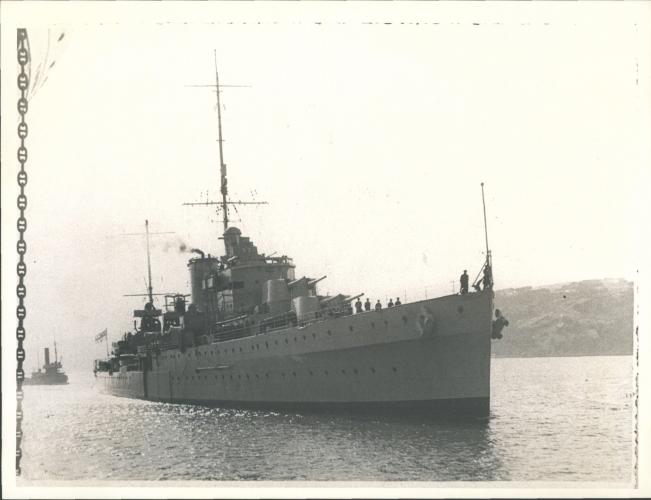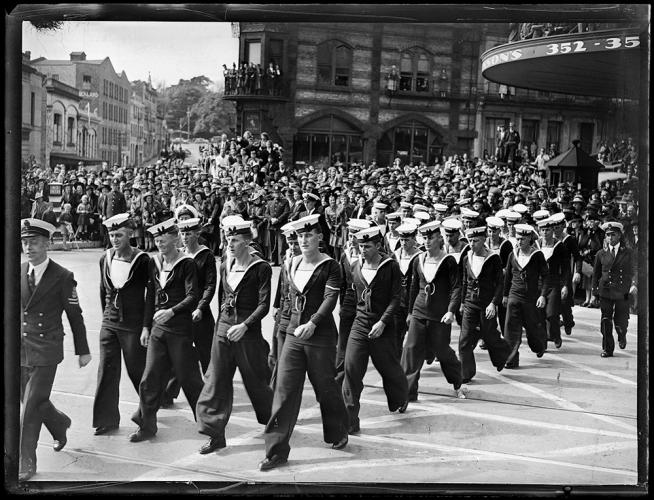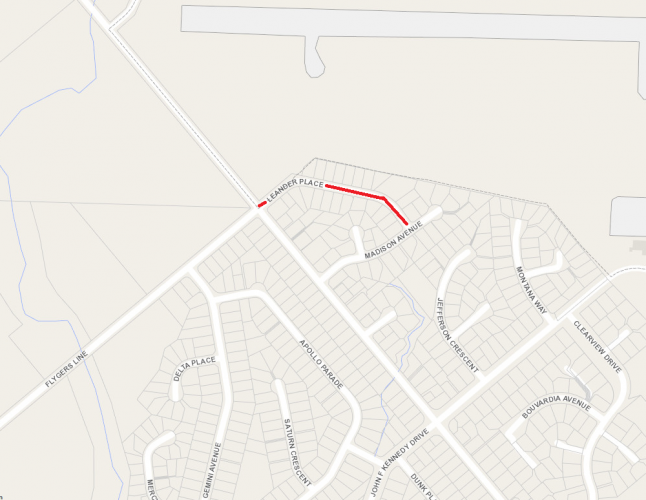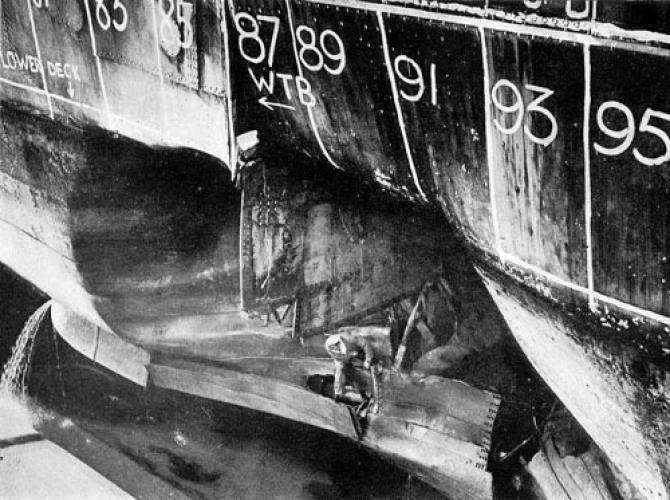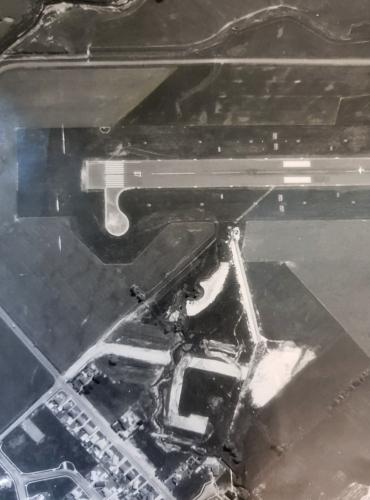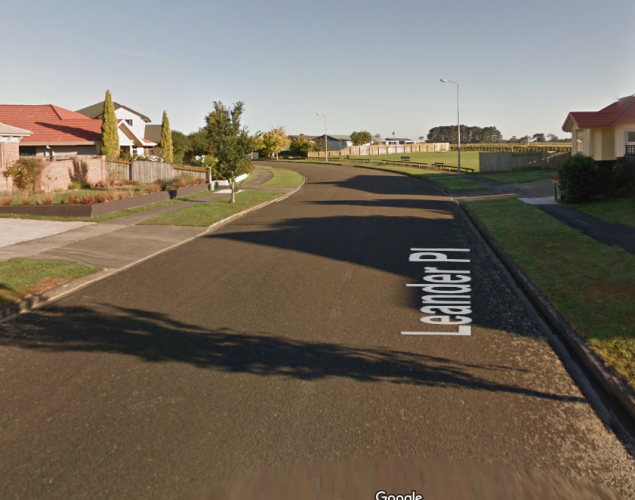122 Leander Place Palmerston North, 122 Leander Place Palmerston North, Street view of Leander Place from Madison Avenue 2018
Reason for the name
This street was named in honour of the Royal New Zealand Navy. The cruiser HMNZ Leander, saw service in WW2. During the period 1961 to 2000, the RNZN had three Leander class frigates, HMNZ Southland, HMNZS Waikato and HMNZS Wellington.
The area surrounding Leander Place held 3 large rural allotments which were part of the Kairanga County Council until 1949. As the Milson Airport grew, further land was ceded to Palmerston North City Council and Flygers Line was closed off to the east of where it intersected Milson Line. With an extended airport runway crossing the closed road, a new subdivision, the Kensington Block, was subdivided for residential properties. The closed off section of Flyger’s Line was diverted southeast 50 metres from the crossing with Milson Line to border the new airport land and provide access to the new subdivision. First surveyed by H R Farquhar in 1975, construction of the road began in 1976. On 26 June 1978 the Palmerston North City Council passed a resolution by Special Order renaming the roadway Leander Place. The second phase of development of the road and residential area began in 1982, creating Madison Avenue and a new connection to Leander Place.
Leander Place lies near the northern outskirts of Palmerston North and at the western end of Palmerston North Airport. The road is a continuation of Flygers Line and bisects Milson Line, running in a dog leg to the south east before terminating at Madison Avenue. There are 22 residential properties along Leander Place. Nearby amenities include Jefferson Reserve, Apollo Park and Mangaone Stream.
Author: Evan Greensides, Heritage Assistant for Palmerston North City Libraries & Community Services.
The HMNZS Leander and 7 other Leander class light cruisers were designed by the British Navy to provide protection commercial shipping. Consisting of 8 x 6-inch guns, 8 x 4-inch guns, 12 anti-aircraft machine guns, 8 torpedo tubes and a Supermarine Walrus aircraft, the Leander class, combined with its top speed of 32.5 knots and maneuverability, was designed to find, outpace and outgun similarly sized enemy ships. HMS Leander was launched at Devonport, England on 24 September 1931 and was commissioned on 24 March 1933. Along with Achilles she served in the New Zealand Division of the Royal Navy. Leander was later commissioned for the New Zealand Navy in 1937 and toured New Zealand ports over the next two years, also participating in exercises in home and Australian waters, as well as undertaking visits to the Pacific Islands.
Leander’s war service started when the cruiser left Auckland at the end of August 1939 to land a small garrison at Fanning Island in the Central Pacific to protect the cable station on the island. Leander’s other early war duties included escorting troopship convoys, searching for German raiders in the South Pacific and representing the navy at the Waitangi Day centennial celebrations. On 2 May 1940 Leander departed Wellington as a part of the escort for 2nd Echelon of the New Zealand Expeditionary Force troopships destined for the Middle East.
By mid-1940 Leander was escorting convoys in the Red Sea area. In between escorting merchant ships, Leander spotted the Italian submarine Galileo Galilei, and, after a brief scuffle, forced her to the surface, capturing it and the crew before towing her into the port of Aden. On 27 June Leander’s aircraft spotted another Italian submarine, EvangelistaTorricelli, which had run aground. After attacks from Leander’s aircraft and a broadside of 6-inch salvoes, the submarine was left crippled on shore with the crew fleeing along the beach, making 10 total submarine losses for the Italian Navy for the month of June. In December, Leander took part in the destruction of a factory in Italian Somaliland supplying the Italian Navy with canned fish.
Travelling to Bombay to resupply, Leander was then tasked with searching the Indian Ocean for enemy raiders. On 27 February 1941, Leander detected a merchant ship on the horizon, Italian commerce raider Ramb I, fleeing to the Dutch East Indies to escape the British advance on its home port of Massawa. At first the Ramb I attempted to bluff by flying misleading signals, but when the New Zealand cruiser drew closer and ordered it to stop, the Italians ran up their ensign and opened fire. The firefight was over within minutes and the Ramb I was sent to the bottom. After searching for further raiding ships in the Indian Ocean for 3 months, the Leander joined a British cruiser and destroyer task force in the Mediterranean.
The first operation for Leander in the Mediterranean was Operation Exporter, an offensive targeting Vichy French forces in Syria. Over the month of June, Leander engaged Vichy French destroyers and came under attack by German aircraft on several occasions, escaping any damage. After another period of operations in support of Cyprus, Leander formed a part of the escort for ships bound for Australia, eventually arriving at Wellington on 8 September 1941.
The entry of Japan into the war on 6 December 1941 resulted in Leander beingtransferred to escorting troop transports and supply ships to and from New Zealand, Australia and around the Pacific islands. On 7 August 1942 American Marines landed on the island of Guadalcanal in the Solomon Islands. Leander had been involved in escorting convoys to the perimeter of the area and in mid-September joined Task Force 67 in the theatre of operations. After a crack was found in her hull, Leander returned to Auckland for repair and refit until March 1943.
On 11 July Leander joined Task Force 18 at Espiritu Santo. The Task Force was patrolling off the Island of Kolombangara on the night of 13 July when a Japanese force was encountered. Leander was hit amidships by a torpedo, killing 27 crew members and wounding 15 others. Quick damage control aboard the ship meant Leander, though crippled, was able to proceed to Tulagi, where temporary repairs were completed, enabling her return to Auckland on 29 July. With the extensive repairs required beyond the abilities of the Auckland dockyard, Leander was then transferred to Boston, the repairs of which took 21 months being completed in May 1944. After being paid off from the Royal New Zealand Navy, the crew joined sister ship Achilles, but after an accident repairing the Achilles both crews ended up on HMS Gambia and operated under British Admiralty control.
Leander was recommissioned in the Royal Navy in September 1945, later joining the Mediterranean Fleet. With WWII over and the Royal Navy downsizing, the ageing Leander was paid off for the last time in 1948, eventually being used as a target for live firing exercises in 1950 before being sold for scrap.


